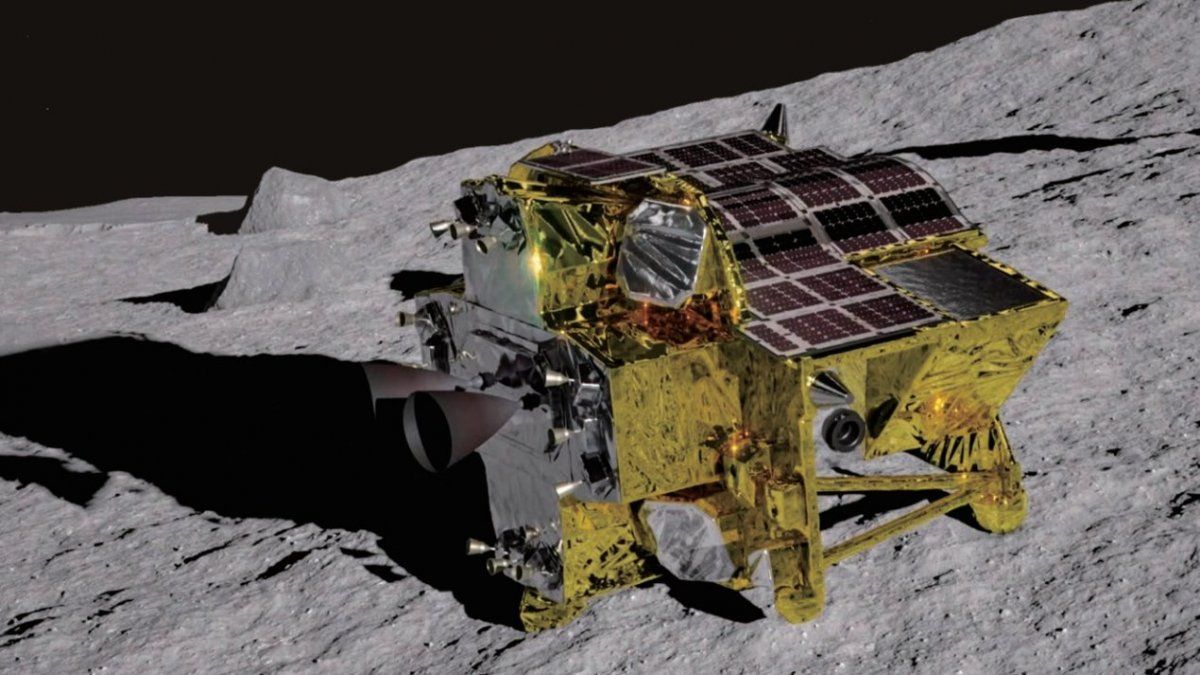The particularity of this mission is that the Japanese lunar landing module was designed to do so with unprecedented precision.
After managing to land on the Moonsolar module panels Moon Sniper from Japan They stopped generating energy. The probe managed to land on Saturday, after midnight, and managed to establish communication with its operators on Earth, they reported from the Japan Aerospace Exploration Agency (JAXA, for its acronym in English).
The content you want to access is exclusive to subscribers.
The Japanese probe Smart Lander for Investigating Moon (SLIM), landed on the Moon at 00:20 local time on Saturday, and was contacted after landing. Then, the problem arose: ”the cells in their panels do not generate energy,” they stated from JAXA, in a statement.


“SLIM works with onboard batteries. The data collected on the moon landing is stored on the spacecraft and we are currently working to maximize scientific results by transmitting that data to Earth,” explained Hitoshi Kuninaka, a JAXA official.
The characteristics of SLIM and its moon landing
The SLIM module, which has been orbiting the Earth satellite since the end of December, It began its descent around midnight at a speed of about 1,700 meters per second.
The module, which was unmanned, 2.4 meters long by 1.7 m wide and 2.7 m high, It was designed to land on the moon with extreme precision, less than 100 meters from the chosen point, hence its nickname “Moon Sniper.” (“moon sniper”, in Spanish).
The probe, equipped with a camera, was developed by JAXA together with the toy manufacturing company Takara Tomy. Japan became the fifth nation to achieve a successful moon landing after the United States, the former Soviet Union, China and India.
As specified, the particularity of this mission is that the Japanese lunar landing module was designed to do so with unprecedented precision and contains a rolling probe developed by a toy company.
The spacecraft must be positioned within a hundred meters of the reference point fixed on the surface of the satellite, a much narrower margin than the usual landing zones of several kilometers.
Thus, Japan tries to regain prominence in the aerospace sector after two lunar missions and several failed rocket launches.
The 5 countries that managed to land on the Moon
To this day, there is only one country that managed to put humans on the Moon. Although this does not mean that USA has been the only country to reach the moon. Four other countries managed to put objects on the satellite.
- India: November 14, 2008 Chandrayaan-1 satellite impactor reached the surface of the Moon. This mission also included an orbiter and, among other things, generated a 3-dimensional map of the lunar surface.
- Japan: It was the first Asian country to achieve this, with the Hiten probe in 1990. Three years after entering orbit, the probe was intentionally impacted against the lunar surface.
- China: In 2013, the Chang’e 3 mission allowed China to place its first rover on the moon: Yutu. A few years earlier, this Asian giant had already had a couple of successful missions with orbiters and even an impactor.
- Union Soviet: In 1959, The Luna 2 probe was the first terrestrial object to land on the Moon. Since the dissolution of the Soviet Union, Russia has not been known for its missions to the Moon, but it is about to make up for it. Roscosmos, the Russian Federal Space Agency, recently announced that it will attempt to send cosmonauts to the Moon in less than 15 years.
- USA: has been the country with the most successful lunar missions. Not only did it manage to send humans to the Moon several times, but it has also sent all kinds of probes and orbiters.
Source: Ambito




